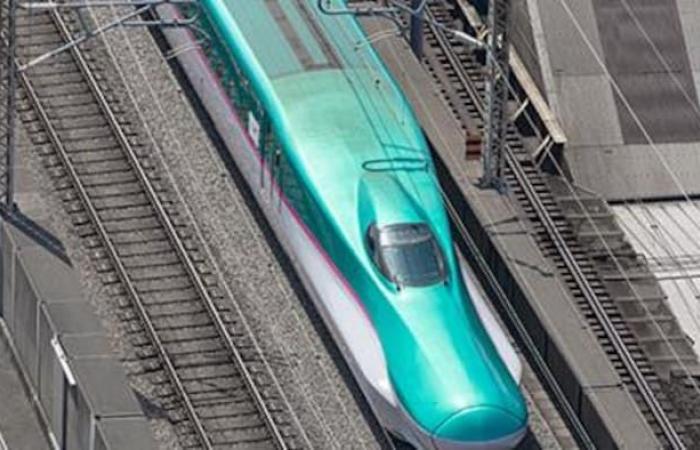The Trudeau government will announce in the coming weeks a high-speed train (TGV) project to connect Quebec and Toronto, - has learned. A TGV in Canada would be a first and is seen as an economic revolution by the government and experts.
Project promoters hope the train will take passengers from Montreal to Toronto in three hours. By car, it takes 5.5 hours to connect the two cities.
According to our sources, the desired speed is 300 km/h, double that of VIA Rail trains at present.
The train will use an electrified reserved track, which will be newly constructed. His visits will also be very frequent. In addition to Quebec, Montreal and Toronto, it should serve Trois-Rivières, Laval, Ottawa and Peterborough.
Open in full screen mode
Exploratory route (not definitive) of the cities which would be served by the future Canadian TGV.
Photo : - / VIA TGF-HFR
It is the Trudeau government which will announce the news in the coming weeks, and perhaps Prime Minister Justin Trudeau himself.
The government did not want to confirm our information, since the contract has not yet been awarded. Finalizing the contract could take several more months, until spring.
Our Liberal government has an ambitious and transformative plan for Canada’s future
writes by email the office of the Federal Minister of Transport, Anita Anand.
On October 16, at an economic conference in Toronto, the minister declared that the federal government moves forward with one of the three submissions received
from the consortiums for a train high frequency and high speed
.
Open in full screen mode
Anita Anand, Minister of Transport of Canada and President of the Treasury Board
Photo: The Canadian Press / Adrian Wyld
This is extremely important, because it will increase productivity, efficiency, it will reduce greenhouse gas emissions, and it will allow us to build more houses along these rails. We are very excited and we can’t wait.
According to a source close to the matter, the consortia estimated that ridership would have been too low with a high-frequency train, since customers are instead looking for the shortest possible journey time.
Furthermore, VIA TGF, the federal Crown corporation created in November 2022 to develop a rail corridor between Quebec and Toronto, should change its name so as not to refer only to high frequency.
According to a government source, the work of the consortia demonstrated that the high-speed train option was much cheaper than initially expected
. Transport Canada initially estimated that the cost of a TGV could amount to up to 80 billion dollars.
It is not known which of the consortia won the tender. However, since the project office owns all the submissions, it could use the best of each of them.
The three consortia that presented proposals
1) Cadence
CDPQ Infra, AtkinsRéalis, Systra Canada, Keolis Canada, Air Canada, SNCF Voyageurs SA
2) Intercity Rail Developers
Intercity Development Partners, Kilmer Transportation, First Rail Holdings, Jacobs, Hatch, CIMA+, RATP Dev Canada, First Group, Renfe Operadora, Meridiam, DF Canada Infrastructures Group Inc.
3) Rail Partners QCONNEXION
Fengate, John Laing, Bechtel, WSP, Deutsche Bahn
The project will be co-developed by the public project office and the private consortium.
It will take four to five years to design the future high-speed track. Funds for implementation must be allocated at the end of this period.
It is therefore not excluded that another government may modify or cancel it.
Avoid building more highways and airports
The TGVthis is good news, according to Pierre Barrieau, lecturer at the University of Montreal in transportation planning and consultant for the firm Gris Orange.
He anticipates major benefits
in the long term, which will help pay for this project
for example by avoiding building more highways and more airports.
We are building a project like this for 150 years. Canada deserved better than a high-frequency train.
The expert also believes that a high-frequency train, without high speed, would not have brought a transformation of mobility
and customer demand would have been too low.
Pierre Barrieau would not be surprised if the project ended up costing $120 billion.

Open in full screen mode
According to the Japan Rail website, Shinkansen bullet trains reach a maximum speed of 320 km/h.
Photo: Courtesy of Japan Rail
Countries with less developed economies than Canada already have high-speed trains. Turkey has the YHT and Poland, the PKPwhich can reach 250 km/h. THE Al Boraq from Morocco peaks at 320 km/h. Indonesia has just inaugurated the Whoosh which goes up to 350 km/h.
Brazil has an ongoing project TGV and India is in the process of importing the Japanese model of the Shinkansen.







